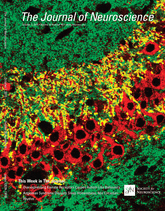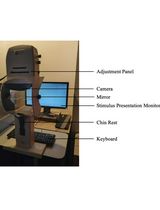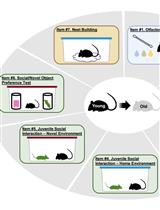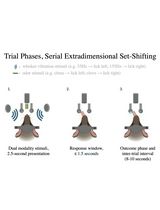- EN - English
- CN - 中文
Sucrose Preference Test to Measure Stress-induced Anhedonia
蔗糖偏好实验测量小鼠的应激诱导快感缺乏
发布: 2016年06月05日第6卷第11期 DOI: 10.21769/BioProtoc.1822 浏览次数: 33436
评审: Soyun KimAdler R. DillmanXi Feng
Abstract
The 2-bottle choice procedure for assessing sucrose preference is a useful test to investigate anhedonia (i.e., inability to feel pleasure) in laboratory rodents, particularly in stress-based models of depression. The 2-bottle choice procedure allows for a comparison between behavioral preference for sucrose solution in drinking water compared to water only. Preference is measured by volume and/or weight of liquid consumed daily, which is then converted to a percent preference compared to a water only baseline period. Sucrose preference is attenuated by a diversity of chronic stressors, including chronic mild and unpredictable stress (Willner et al., 1992; Willner, 1997; Pothion et al., 2004) and social defeat stress (Krishnan et al., 2007). It may also be susceptible to perturbation in mouse models of drug addiction because sucrose preference is altered in drug-dependent individuals (Kampov-Polevoy et al., 1997; Bogucka-Bonikowska et al., 2002; Janowsky et al., 2003). Both stress- and drug-induced alterations in sucrose preference may stem from maladaptations in the reward pathway, which consists of the dopaminergic neurons extending from the ventral tegmental area to the nucleus accumbens (NAc). Indeed, alterations in cyclic-AMP response element binding protein (CREB) activity in NAc underlie preference for sucrose (Barrot et al., 2002). Additionally, the transcription factor ΔFosB in NAc (Wallace et al., 2008), but not dorsal hippocampus (Eagle et al., 2015), regulates natural rewards, such as sucrose consumption. Therefore, the sucrose preference test described below provides a well-validated model to assess anhedonia and the function of specific brain regions and circuits.
Keywords: Anhedonia (快感缺失)Materials and Reagents
- Sipper caps, composed of 2.5 cm straight stainless steel sipper tubes (VWR International, catalog number: 10718-330 ) inserted into rubber stoppers (VWR International, catalog number: 59581-287 )
- 50 ml conical centrifuge tubes (VWR International, catalog number: 89039-656 )
- Adult (7 weeks or older) mice (C57BL/6J) (The Jackson Laboratory)
Note: Alternate strains and ages of mice may also be used. Mice are housed singly, in an environment with controlled temperature (around 23 °C) and humidity under a 12-12 h light-dark cycle with food and water ad libitum. See Animal considerations in Notes for more details. - Sucrose (crystals)
- Reverse osmosis (RO) filtered water
Note: Alternatively substitute with the mouse’s normal drinking water.
Equipment
- Mouse caging
- Polycarbonate tubs (Mouse Cage; 7 ½ in W x 11 ½ in L x 5 in H) (Ancare) with standard woodchip mouse bedding (NORTHEASTERN PRODUCTS CORP., Aspen Chip)
Note: Standard cage changes are allowed during the acclimation period (see below), however it is recommended to avoid cage changes during the period of data collection (Procedure steps 2-5) to prevent leakage. Leakage should be avoided to reduce undesired variability. - Stainless steel wire cage lid (Ancare, model: N10SSR Mouse Lid )
- Polycarbonate tubs (Mouse Cage; 7 ½ in W x 11 ½ in L x 5 in H) (Ancare) with standard woodchip mouse bedding (NORTHEASTERN PRODUCTS CORP., Aspen Chip)
Procedure
文章信息
版权信息
© 2016 The Authors; exclusive licensee Bio-protocol LLC.
如何引用
Readers should cite both the Bio-protocol article and the original research article where this protocol was used:
- Eagle, A. L., Mazei-Robison, M. and Robison, A. J. (2016). Sucrose Preference Test to Measure Stress-induced Anhedonia. Bio-protocol 6(11): e1822. DOI: 10.21769/BioProtoc.1822.
- Eagle, A. L., Gajewski, P. A., Yang, M., Kechner, M. E., Al Masraf, B. S., Kennedy, P. J., Wang, H., Mazei-Robison, M. S. and Robison, A. J. (2015). Experience-dependent induction of hippocampal DeltaFosB controls learning. J Neurosci 35(40): 13773-13783.
分类
神经科学 > 行为神经科学 > 认知
您对这篇实验方法有问题吗?
在此处发布您的问题,我们将邀请本文作者来回答。同时,我们会将您的问题发布到Bio-protocol Exchange,以便寻求社区成员的帮助。
Share
Bluesky
X
Copy link














